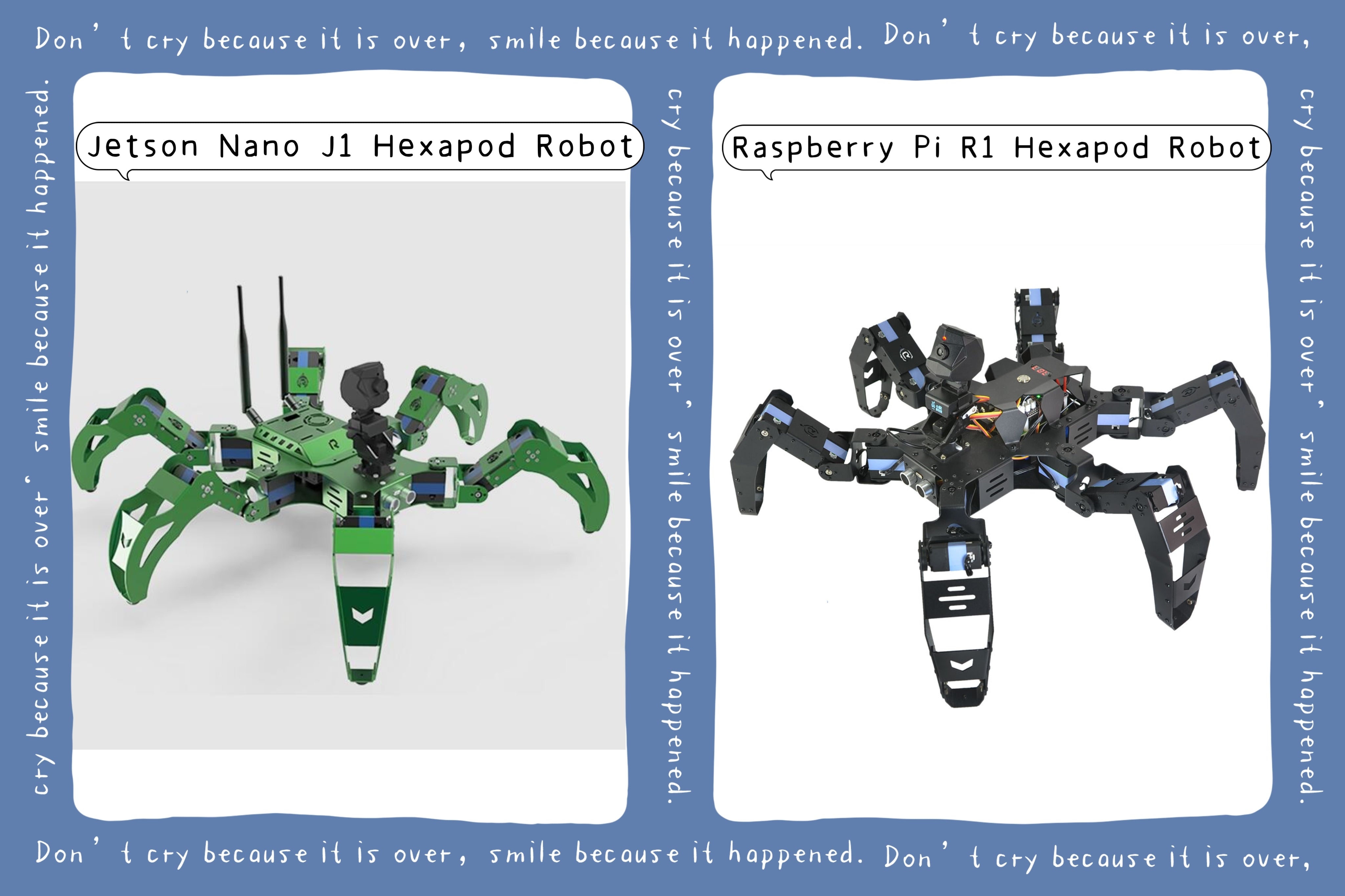1. Hardware Platform Overview
Raspberry Pi
Raspberry Pi is a microcomputer motherboard based on ARM architecture, known for its compact size and rich interface functions. Its common models such as Raspberry Pi 3B+, 4B, 5, etc. have powerful processing capabilities and flexible scalability. Raspberry Pi is widely used in education, scientific research, development and other fields, and has attracted a large number of developers with its open source characteristics.
Jetson Nano
Jetson Nano is an artificial intelligence (AI) computing module for edge computing launched by NVIDIA. It integrates a high-performance GPU and deep learning accelerator, suitable for running modern AI algorithms and neural networks. Jetson Nano's compact size makes it easy to integrate into various embedded systems, such as hexapod bionic robots.
2. Analysis of technical differences
Processing power and performance
Raspberry Pi provides stable computing power with its ARM architecture processor, which is sufficient to meet the basic control and data processing needs of hexapod bionic robots. However, compared with Jetson Nano, Raspberry Pi may be unable to handle complex algorithms and deep learning tasks. Jetson Nano integrates GPU and deep learning accelerator, which can process multiple neural networks in parallel, providing higher processing power and performance. This gives Jetson Nano a clear advantage in AI functions such as real-time image recognition and obstacle detection.
Power consumption and energy efficiency
Raspberry Pi is known for its low power consumption and is suitable for battery-powered embedded systems. However, while Jetson Nano provides high performance, its power consumption is relatively high. Therefore, when designing a hexapod bionic robot, it is necessary to weigh the relationship between power consumption and performance according to the application scenario and energy supply.
Scalability and compatibility
Raspberry Pi is loved by developers for its rich interfaces and scalability. It supports a variety of peripherals. Choose the appropriate expansion modules and sensors according to specific needs.
Cost and Investment
Raspberry Pi is popular for its low cost and wide community support. For developers with limited budgets, Raspberry Pi is an affordable choice. However, Jetson Nano is relatively expensive due to its high performance and AI computing power. When choosing a hardware platform, you need to weigh it against the project budget and long-term return on investment.
3. Application scenario considerations
Raspberry Pi Bionic R1 Hexapod Robot
Raspberry Pi Bionic Hexapod is suitable for application scenarios that have high requirements for real-time and stability, but low requirements for AI functions. For example, tasks such as environmental monitoring and terrain exploration can be achieved with Raspberry Pi Bionic Hexapod.
Jetson Nano Bionic J1 Hexapod Robot
Jetson Nano Hexapod is more suitable for application scenarios that require high-performance computing and AI functions. For example, in tasks such as autonomous navigation, obstacle detection, and target recognition, Jetson Nano Hexapod can exert its powerful AI computing capabilities to achieve a higher level of intelligence.
4. Summary and Outlook
There are obvious differences between Raspberry Pi Bionic Hexapod and Jetson Nano Hexapod in terms of hardware platform, technical differences, and application scenarios. When choosing the right hardware platform, you need to weigh the specific needs and budget. In the future, with the continuous development of intelligent robot technology, we expect to see more hexapod bionic robots based on different hardware platforms, bringing more convenience and possibilities to human society.

